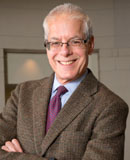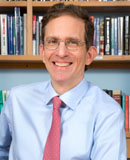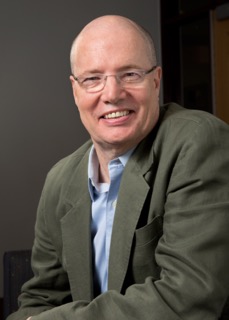About Riptide
Vol. 1 Fellows

John Huey

Martin Nisenholtz

Paul Sagan
Vol. 2 Fellow

John Geddes
This project is the result of collaboration among four Fellows at the Shorenstein Center at the Harvard Kennedy School. Beginning in the 2013 spring term three Fellows conceived the idea and began creating this oral history of the collision between the news media and digital technology by interviewing about 60 principals:
JOHN HUEY (@johnwhuey) has been a writer, editor and publishing executive for 40 years, beginning as a reporter for a small weekly newspaper in Georgia before moving on to report for The Atlanta Constitution. There he filed his first story electronically from the Georgia state capitol on a Xerox Telecopier (six minutes a page). He spent 13 years at The Wall Street Journal, where he covered the Nicaraguan revolution of 1978 (filed by hotel Telex) and was founding managing editor of The Wall Street Journal/Europe. He worked for 24 years at Time Inc., where he covered countless industry disruptions as a writer and later editor of FORTUNE. He retired from Time Inc. at the end of 2012, after serving seven years as its editor-in-chief.
MARTIN NISENHOLTZ (@martinn123) is the former digital head at The New York Times and now professor of the practice of digital communication at Boston University and venture partner at Firstmark Capital in New York. Previously he was an adjunct professor at the Columbia Journalism School. He was senior vice president for digital operations at The New York Times Company from 2005 to 2012. He was the founding leader for nytimes.com in 1996 and was later CEO of New York Times Digital. Before joining the Times in 1995, he founded the Interactive Marketing Group at Ogilvy and Mather, among the world’s first digital advertising agencies. More than any of the three of us, he has been at the heart of many of the crucial moments chronicled here. As such, he is an interviewee as well as an interviewer in this oral history project. He began his career as an assistant professor at NYU’s Interactive Telecommunications Program, where he worked on an early version of Teletext in 1979.
PAUL SAGAN (@PaulSagan1) is an executive in residence at General Catalyst Partners, a venture capital firm, and former CEO and currently a director of Akamai Technologies (a company that counts thousands of significant Internet players as clients and delivers as much as an estimated quarter of the Web’s traffic daily). He was employee #15 and the company’s CEO from 2005 until 2013. He grew up in a newspaper publishing family in Chicago and began his journalism career by taking his first new photo at age 12 and became a news writer at WCBS-TV after college, more than 30 years ago. He went on to become news director and the recipient of three Emmy Awards for broadcast journalism in New York. He designed and launched NY1 News for Time Warner and was president and editor of new media at Time Inc. in the mid ’90s, where he worked on the creation of Pathfinder, Roadrunner, and the Full Service Network.
In the fall term of 2014 a fourth Fellow continued the effort, adding 20 more interviews with tech journalists, a second volume (or essay) and developing an innovative approach to cross-connecting our interviews:
JOHN GEDDES (@jomaged) has been a reporter and editor since 1976. His first job in New York was at Reuters where he typed the new headlines that ran on the zipper around One Times Square. He spent five years in Germany as a reporter, eventually joining The Wall Street Journal. In his 13 years at the Journal, he was managing editor of the European edition, a senior editor in New York leading a redesign of the paper into three sections and the paper’s national news editor. He left the Journal to join a short-lived, ill-timed investment partnership targeted at capitalizing on the digitization of media. He then worked 19 years at The New York Times, beginning as the newspaper’s business editor, where he helped start the Circuits section covering technology. He joined the paper’s masthead in 1997, becoming managing editor in 2003 and spent a decade in that post (including time supervising the newsroom’s digital efforts) before departing in 2013.
We are extremely grateful for the support of the Shorenstein Center. Alex S. Jones, the Laurence M. Lombard Lecturer in the Press and Public Policy and the director of the Center, believed in us and our project, and he trusted that we would create something worthy of the Center’s reputation for excellent scholarship and provocative thinking.
We received timely and invaluable help from Tom Silver, a Harvard College student, and Alex Remington, now a product manager at The Washington Post and previously a student at the Harvard Kennedy School and one of our graduate research assistants. Without their assistance we simply would not have been able to complete or update this project.
In addition, Tom Patterson, the Bradlee Professor Government and the Press, provided important and timely input. Nancy Palmer, the Center’s executive director, and Edith Holway, now retired as the events and Fellows program director, guided us through many of the ins and outs of being a Fellow at Harvard.
We also appreciate the assistance of Nilagia McCoy, communications manager, Donna Tremonte, web developer, and Janell Sims, the former communications manager and a tireless partner in helping us proof and ready the text of the first essay.
Yin Chen, another Kennedy School student, also joined our team as a graduate research assistant and supported our effort. In addition, Corinne Curcie, a Harvard College student ably and critically assisted us along the way.
We also thank Joshua Benton, director of the Nieman Journalism Lab, for his work designing and building the original site.
We also want to thank our fellow Shorenstein Center Fellow Peter Hamby, from CNN, for filling in for us to interview John Harris and Jim VandeHei at Politico; Randall Rothenberg, president and CEO of the Interactive Advertising Bureau, for interviewing Sir Martin Sorrell; and our friend Walter Isaacson, president and CEO of the Aspen Institute, for jumping in to interview Steve Case.
We want to be clear, however, that at the end of the day, we four selected the topics, recruited the interview subjects, and are responsible for the outcome of the project. We conducted almost all of the interviews ourselves and we have noted the exceptions. We relied on CastingWords to transcribe the interviews, and we generally exercised only minimal cleanup of the transcripts, so we acknowledge that some discrepancies from the video and audio may exist.
We hold no one else accountable for the content of this effort but ourselves. But we hope that others will find this collection of interviews and attendant material interesting and helpful as they try to understand and unravel what really happened to the news business. Perhaps, future Shorenstein Fellows will conduct additional interviews for this story and contribute more material to make this a growing archive. In particular, we recognize that disruption is happening on a global basis, and we hope that others will follow with a more international perspective. While we came to believe certain things about what did happen and why — and we share those ideas and call them out in our narrative here — we invite you, the reader, to dig in and draw your own conclusions.
John Geddes
John Huey
Martin Nisenholtz
Paul Sagan
April 2015